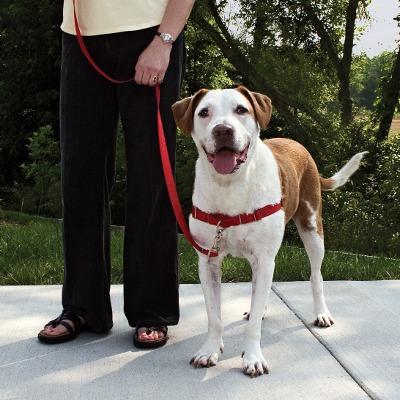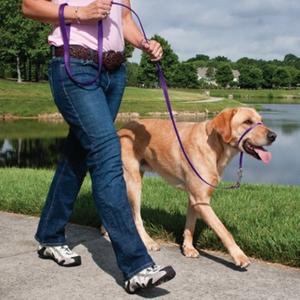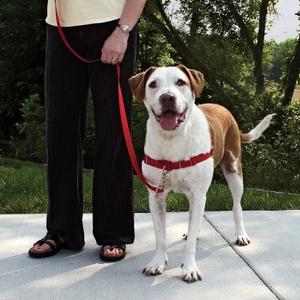 You're sick of your dog pulling you down the street during walks and you've decided to try the Easy Walk® Harness. Congratulations! Taking the time to fit the Easy Walk® Harness properly in the beginning is time worth spending.
You're sick of your dog pulling you down the street during walks and you've decided to try the Easy Walk® Harness. Congratulations! Taking the time to fit the Easy Walk® Harness properly in the beginning is time worth spending.
I can’t tell you how many times I’ve seen an incorrectly fit Easy Walk Harness or Gentle Leader® Headcollar on a dog where the owners swear to me it’s working well. Although an incorrectly fit harness or headcollar might work a little, it might not always be the most comfortable for the dog. Plus, if you think it’s working then, imagine how much better it could still be if it was just worn correctly!
Adjust the Shoulder Strap
To fit the Easy Walk Harness on your dog properly, fit and adjust the straps separately. Start with the shoulder strap, then do the belly strap. This will be the foundation of the fit and provides a secure base.

- Place the shoulder strap over your dog’s head.
- Adjust it so connector rings sit above and behind the dog’s shoulder.
- Snap the belly strap closed.
- Adjust the belly strap so the harness is snug around the dog’s girth when you connect the quick-snap buckle.
- Once the shoulder and belly straps are connected and adjusted, make sure they resemble a vertical line as much as possible and aren't in the sensitive armpit area.
- Adjust the fit so the harness straps fit snugly around your dog. Have a snug fit so that you can only fit 1-2 fingers between the strap and the dog’s body.
A snug fit is important because the shoulder and belly straps combined create the foundation that keeps the harness in place and keeps it from rotating on the dog. Rotation around the dog can cause uncomfortable rubbing and chafing.
Fit the Chest Strap
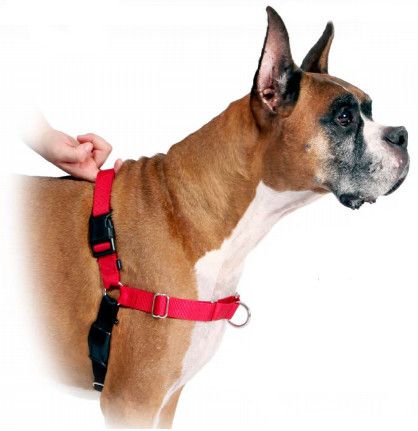 Once the shoulder and belly straps are adjusted, fit the chest strap. The chest strap should fit horizontally and not droop down or too easily ride up close to the dog’s neck. Change both adjustors on the strap evenly so the martingale loop remains in the center.
Once the shoulder and belly straps are adjusted, fit the chest strap. The chest strap should fit horizontally and not droop down or too easily ride up close to the dog’s neck. Change both adjustors on the strap evenly so the martingale loop remains in the center.
When the harness fits properly, you should be able to look at the side of your dog and the harness should resemble a sideways T.
Now clip the leash to the martingale loop on your dog’s chest and head out for a walk!
Using the Leash & Starting Your Walk
When you have the Easy Walk Harness fit correctly, the next very important part of this equation is how you handle the leash.
-
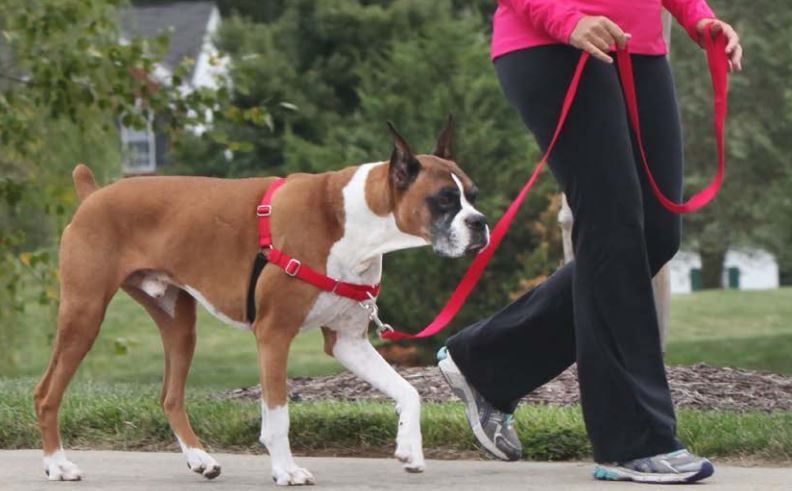 To achieve the best results, hold the leash so your dog has enough leash to walk by your side but not enough to forge ahead.
To achieve the best results, hold the leash so your dog has enough leash to walk by your side but not enough to forge ahead. - When your dog starts to pull, redirect your dog’s attention to you.
- Once he is back in the desired heeling position, reward your dog with a treat before you start walking again.
- You may find yourself redirecting your dog quite a bit in the beginning, but with some patience, consistency, and rewards such as their favorite treat, he will quickly learn the correct way to walk with you.
Remember, no tension and a loose leash = “YES!” and the walk continues. This is the moment to reward your dog with a small treat and praise. Tension and tight leash = “Incorrect,” and you should gently redirect the dog back into position beside you.
With a correct fit and proper leash techniques, the Easy Walk Harness will surely be a wonderful tool in teaching your dog to walk nicely on a leash. There isn’t anything quite as relaxing as a beautiful stroll with your dog, so enjoy the time together by using one of these great no-pull solutions!
More Resources
- Read the Easy Walk Fitting Guide.
- Watch the fit & training video.
- Call Customer Care for a step-by-step walkthrough.

